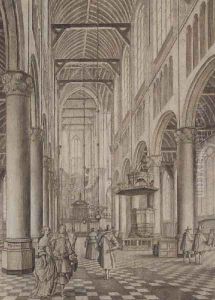Johannes Coebermans Paintings
Johannes Coebermans was a Flemish painter born in 1625, whose work is emblematic of the Baroque period, a time characterized by dramatic expression and detail. While less known than some of his contemporaries, Coebermans contributed significantly to the artistic landscape of the 17th century, particularly within the domain of religious art. His life and career were predominantly anchored in Antwerp, a city that was a vibrant center for art and commerce during his time. This environment provided a fertile ground for his development as an artist.
Coebermans' artistic journey was deeply influenced by the Counter-Reformation, which sought to reaffirm the Catholic Church's dominance in the wake of Protestant Reformation. This historical context is crucial for understanding his body of work, which predominantly features religious themes, rich in symbolism and emotional depth. His paintings are known for their meticulous attention to detail, vibrant color palette, and the dynamic interplay of light and shadow, characteristics that are quintessential to the Baroque style.
Despite his evident skill and contributions to the Flemish art scene, Johannes Coebermans remains a somewhat obscure figure in art history. This obscurity could be attributed to the overshadowing fame of his contemporaries, such as Peter Paul Rubens and Anthony van Dyck, whose works have come to define the era. Nonetheless, Coebermans' paintings are valuable for their artistic merit and for what they reveal about the religious and cultural contexts of his time.
Throughout his career, Coebermans received commissions for altarpieces and religious works for churches in and around Antwerp. His ability to convey complex theological themes through visual art made his work sought after for religious spaces. In addition to his religious paintings, Coebermans also explored portraiture, though these works are lesser-known and studied.
Johannes Coebermans passed away in 1689. Today, his surviving paintings offer a window into the Baroque period and continue to be studied for their artistic and historical significance. Despite the challenges in fully reconstructing his biography and oeuvre, Coebermans remains an intriguing figure for art historians who seek to uncover and appreciate the breadth of talent that defined Flemish art in the 17th century.
